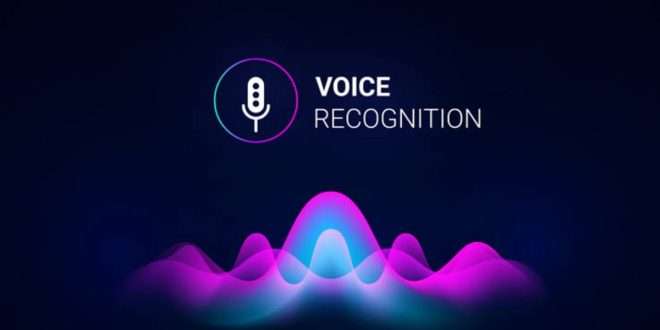In today’s fast-paced digital era, technology continues to shape the way we interact with the digital world. One remarkable innovation that has gained significant traction is Progressive Web Apps (PWAs). These web applications offer a seamless user experience, blurring the lines between traditional websites and native mobile apps. But what if we told you that PWAs are about to take convenience to a whole new level? Enter the rise of voice-activated PWAs, a game-changer that marries hands-free convenience with the power of web apps.
Understanding Progressive Web Apps (PWAs)
Before we delve into the world of voice-activated PWAs, let’s take a moment to understand what PWAs are. A PWA is a web application that employs modern web technologies to provide users with an app-like experience right in their browsers. PWAs are responsive, fast, and secure, making them the ideal choice for businesses looking to engage their users seamlessly across different devices.
The Evolution of Voice-Activated Technology
Voice-activated technology has witnessed remarkable growth in recent years. The widespread adoption of virtual assistants like Siri, Google Assistant, and Alexa has made voice commands a natural and intuitive way to interact with our devices. From setting reminders to answering queries, voice-activated technology has already integrated into our daily lives.
Merging Voice Activation with PWAs: A Powerful Synergy
Now, imagine the potential when voice-activated technology meets the convenience of PWAs. The result is a powerful synergy that has the potential to revolutionize how users interact with web applications. Voice-activated PWAs aim to provide users with a hands-free experience, eliminating the need to rely on touch or type interactions. This opens up a plethora of opportunities for businesses to engage users in new and innovative ways.
The Advantages of Voice-Activated PWAs
Enhanced Accessibility:
Voice-activated PWAs make web applications more accessible to individuals with disabilities or those who find it challenging to interact through traditional means.
Seamless Navigation:
Users can effortlessly navigate and interact with the app using voice commands, reducing friction and enhancing the overall user experience.
Speed and Efficiency:
With voice commands, tasks can be executed swiftly, making interactions with the PWA even more efficient.
Multitasking Made Easy:
Voice-activated PWAs enable users to perform tasks while on-the-go, such as sending messages or setting reminders, without having to stop and focus on the screen.
Integration with IoT Devices:
As the Internet of Things (IoT) continues to expand, voice-activated PWAs can seamlessly integrate with various smart devices, creating a unified and interconnected experience.
Real-World Examples of Voice-Activated PWAs
Let’s explore some exciting real-world examples of voice-activated PWAs in action:
Voice-Activated Shopping Assistant
Imagine having a voice-activated shopping assistant while browsing an e-commerce website. By simply using voice commands, users can search for products, add items to their cart, and even complete the checkout process, all without touching a single button.
Voice-Activated Task Management
A voice-activated task management PWA can revolutionize productivity. Users can add tasks, set reminders, and organize their schedules entirely through voice commands, making it a convenient tool for professionals on the go.
Voice-Activated Content Consumption
Voice-activated PWAs can enrich the content consumption experience. Users can listen to articles, blog posts, or podcasts hands-free, enabling a seamless and immersive way to engage with digital content.
The Future of Voice-Activated PWAs
As technology continues to evolve, we can expect voice-activated PWAs to become more sophisticated and intuitive. Advancements in Natural Language Processing (NLP) and Artificial Intelligence (AI) will enable voice-activated PWAs to better understand user commands, leading to more accurate and personalized interactions.
Final Words
The rise of voice-activated PWAs marks an exciting turning point in the realm of web applications. The fusion of voice-activated technology with the power of PWAs opens up a world of possibilities, offering users a hands-free and seamless experience like never before. From enhanced accessibility to seamless navigation, the advantages are undeniable. As the technology matures, we can expect voice-activated PWAs to become an integral part of our daily lives, transforming the way we interact with the digital world.
Commonly Asked Questions
1. Are voice-activated PWAs compatible with all devices?
Yes, voice-activated PWAs are designed to work on a wide range of devices, including smartphones, tablets, desktops, and even smart home devices.
2. How secure are voice-activated PWAs?
Voice-activated PWAs prioritize user privacy and security. Data encryption and secure connections ensure that sensitive information remains protected.
3. Can voice-activated PWAs understand different accents and languages?
Advancements in NLP and AI enable voice-activated PWAs to comprehend a variety of accents and languages, providing a more inclusive experience.
4. Are voice-activated PWAs easy to develop for businesses?
Developing voice-activated PWAs requires expertise in both web development and voice technology integration. However, many development frameworks and APIs are available to facilitate the process.
5. Can voice-activated PWAs work offline?
Yes, PWAs, including voice-activated ones, can offer limited functionality offline, making them a versatile solution for users in various scenarios.
Remember, as the technology behind voice-activated PWAs continues to evolve, we can anticipate even more exciting possibilities and innovations on the horizon. Embracing this emerging trend can undoubtedly give businesses a competitive edge and provide users with a hands-free, convenient, and engaging web experience.
 webfily
webfily



